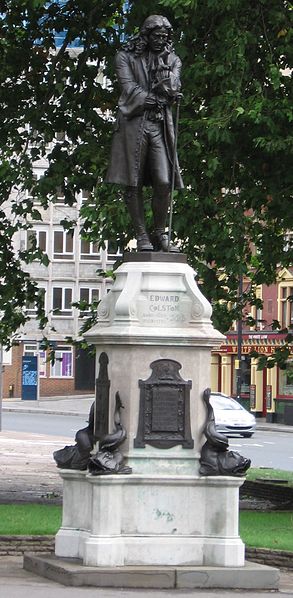In his latest Age of Invention newsletter, Anton Howes engages with a topic that is in the headlines today as we find ourselves in the midst of an unexpected outbreak of iconoclasm:

The John Cassidy (1860-1939) statue of Edward Colston, which stood in Bristol from 1895-2020 before being taken down and thrown into Bristol harbour during the protests after the death of George Floyd.
Photo by William Avery via Wikimedia Commons.
… public art in the eighteenth and nineteenth centuries used to be about inculcating virtue, which is something we seem to have forgotten. Public art was explicitly moralising, and not in the subversive way so often seen today, which leads us to question ourselves but rarely gives us answers. Back then, public art was instead meant to inspire. In painting, for example, the most prestigious and public-facing genre was history painting. History painting showed allegorical, mythological, and religious scenes, as well as those from actual history, in order to illustrate the exploits of the great and good, setting an example to us of integrity and public-spiritedness.
Importantly, the subjects of history paintings were taken from classical Greek or Roman history, or from mythology or religion, because such figures were generally uncontroversial — they could be upheld as paragons of virtue in a way that more recent and local historical figures could not. And the same went for statues, which became the main mediums of public art because the spaces available for history paintings were lacking. (The great room of the Society of Arts, by the way, has some of the few major history paintings in the country, all executed by the troubled self-proclaimed genius James Barry — the fastest riser in the Royal Academy’s history, and also, as far as I know, the only person to ever be expelled from it)
So, if some public statues have become controversial, that’s a clear sign of their failure. To the Victorians who put up the statue of slave trader Edward Colston in 1895, he must have seemed a distant and uncontroversial paragon of philanthropy. But today, he is mostly remembered for his murderous avarice. As such, he doesn’t deserve space on our streets or squares, for much the same reason that people in the eighteenth century avoided putting up statues of Oliver Cromwell — depending on your politics, he was either an ambitious and fanatical tyrant, or a selfless promoter of parliamentary liberties. Either way, it was the controversy itself that made him unsuitable: controversy got in the way of moral education. (Funnily enough, Cromwell seems to have got his public statues in the 1890s, too, just like Colston — maybe it was a low-point for the quality of history-teaching?)
I’m worried, however, that we’ve lost the self-confidence to replace them with statues that uncontroversially inculcate virtue (and in more than just a subversive or critical way). I suspect it take the delusions of grandeur of a James Barry to pull it off — someone who thought the history painter akin to a poet, like Shakespeare. But, as Tim Almond pointed out to me on twitter, perhaps we already do have such forms of virtue-promoting public art, and that all that has changed is the medium. Thus, rather than gazing upon statues or history paintings, we instead watch blockbuster superhero movies.



